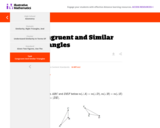
The goal of this task is to understand similarity as a natural extension of congruence.
- Provider:
- Illustrative Mathematics
- Date Added:
- 06/22/2022

The goal of this task is to understand similarity as a natural extension of congruence.
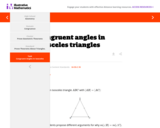
The goal of this task is to establish that base angles in an isosceles triangle are congruent.
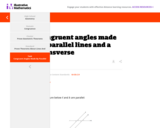
The goal of this task is to prove congruence of vertical angles made by two intersecting lines and alternate interior angles made by two parallel lines cut by a transverse.
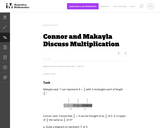
The purpose of this task is to have students think about the meaning of multiplying a number by a fraction, and to use this understanding of fraction multiplication to make sense of the commutative property of multiplication in the case of fractions.

The goal of this task is to estimate the measure of angles in triangles with integer side lengths.
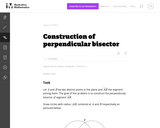
The construction of the perpendicular bisector of a line segment is one of the most common in plane geometry and it is undertaken here. In addition to giving students a chance to work with straightedge and compass, the problem uses triangle congruence both to show that the constructed line is perpendicular to AB and to show that it bisects AB.
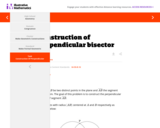
The construction of the perpendicular bisector of a line segment is one of the most common in plane geometry and it is undertaken here.
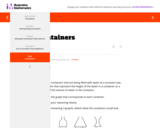
The purpose of the task is to help students think about how two quantities vary together in a context where the rate of change is not given explicitly but is derived from the context.
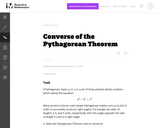
This task is for instruction purposes. Part (b) is subtle and the solution presented here uses a "dynamic" view of triangles with two side lengths fixed. This helps pave the way toward what students will see later in trigonometry but some guidance will likely be needed in order to get students started on this path.
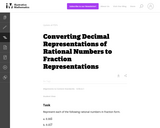
Standard 8.NS.1 requires students to "convert a decimal expansion which repeats eventually into a rational number." Despite this choice of wording, the numbers in this task are rational numbers regardless of choice of representation. For example, 0.333 and 1/3 are two different ways of representing the same number.
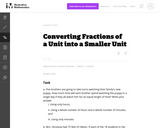
This task gives students word problems with a given a set of a specified size and a specified number of subsets. The questions ask the student to find out the size of each of the subsets.
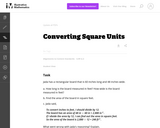
This task provides an opportunity to work on the Standard for Mathematical Practice 3 Construct Viable Arguments and Critique the Reasoning of Others.

While the task as written does not explicitly use the term "unit rate," most of the work students will do amounts to finding unit rates. A recipe context works especially well since there are so many different pair-wise ratios to consider.
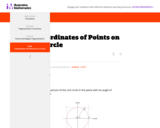
The purpose of this task it to use geometry and algebra in order to understand the behavior of the trigonometric function f(x)=sinx+cosx. The task has been stated in an open ended fashion as there are natural solutions using geometry, or using the trigonometric identity sin2x=2sinxcosx, or algebraically solving a system of equations.
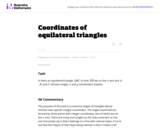
The purpose of this Illustrative Mathematics task is to examine angles of triangles whose vertices have specific integer coordinates.
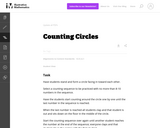
This task suggests ways to incorporate counting circles into classroom activities.
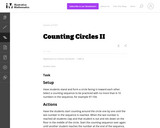
Students practice counting sequences by standing in a circle and counting one by one.

This activity allows students to practice counting.
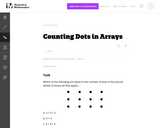
Students who work on this task will benefit in seeing that given a quantity, there is often more than one way to represent it, which is a precursor to understanding the concept of equivalent expressions.
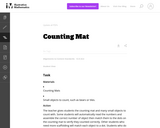
This task gives students another way to practice counting and gain fluency with connecting a written number with the act of counting. This task should be introduced by the teacher and would then be a good independent center.